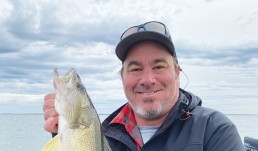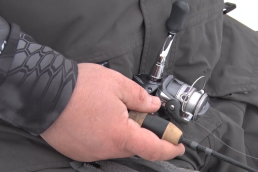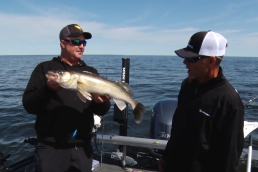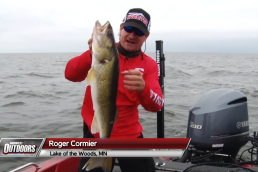Leadcore Trolling Tactics with Tony Roach
SHARE THIS POST
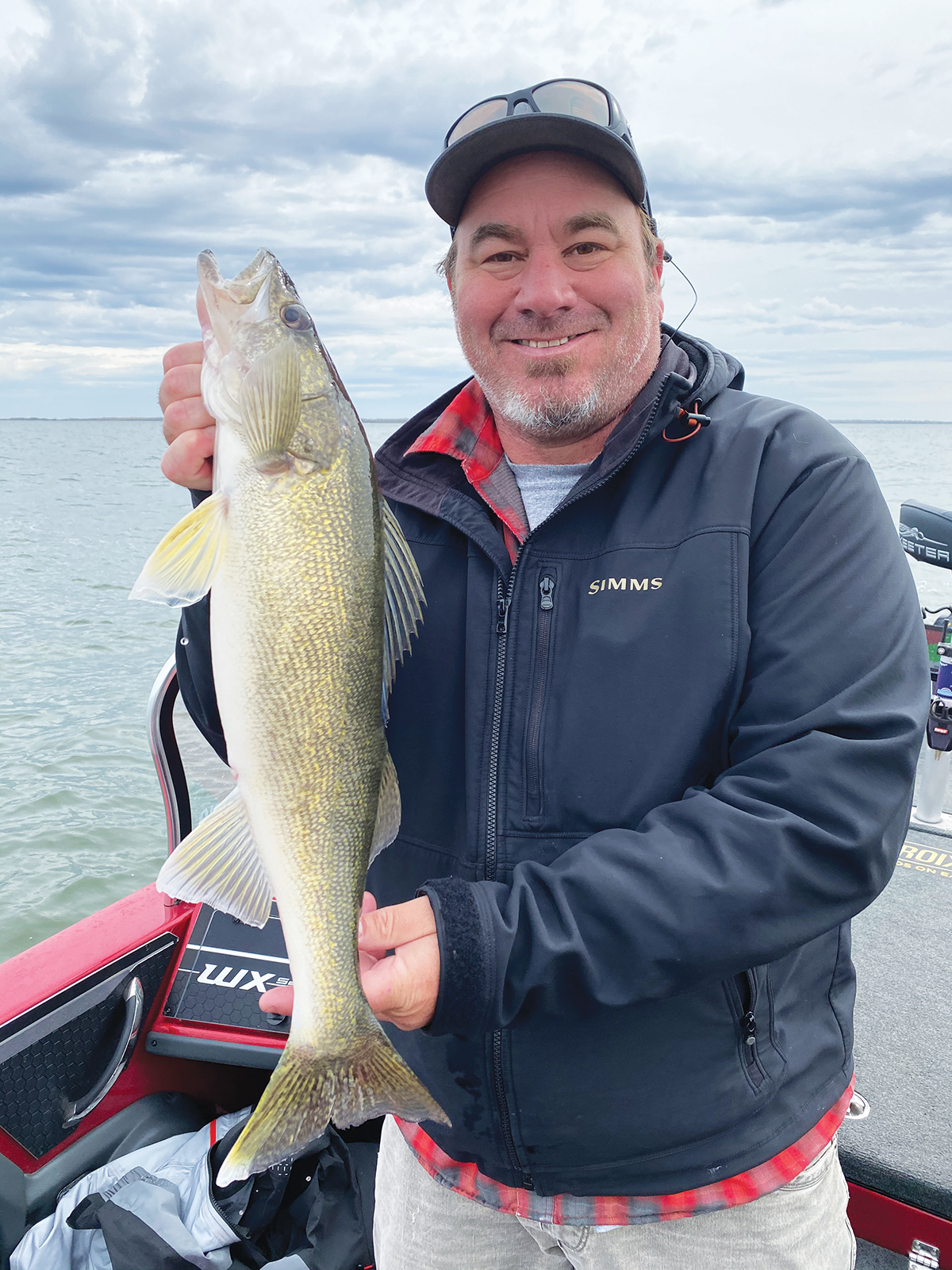
Minnesota fishing guide and MidWest Outdoors contributor Tony Roach fishes almost daily in all four seasons, but the mid- to late-summer period is one of his favorite timeframes for targeting walleyes on fisheries statewide. You’ll frequently find him in his Lund with guide customers on big-water fisheries such as Leech, Big Winnie and Lake Mille Lacs in the central region of the state. Especially on Winnie and Mille Lacs, walleyes begin a period of transition, shifting from holding in loose schools on the edges of mudflat structure located in the deeper main lake region. As water temperatures peak during the height of summer, the fish pull away from structure and lead a scattered existence, roaming the featureless mud basin, chasing perch and pelagic baitfish. We connected with Tony to learn more about why this transition occurs, and how he catches these walleyes that aren’t easily located on structure.
MidWest Outdoors: Let’s begin with you clarifying this period of transition for the walleyes. Some anglers get trapped by fishing memories and recent history, with a mindset of “I caught them here last week so they must still be here today.” This is a trap: When the walleyes stop living close to structure and begin to suspend and roam, tactics such as live bait rigging on mudflat breaklines no longer produce bites as consistently as earlier in summer. Why does this happen?
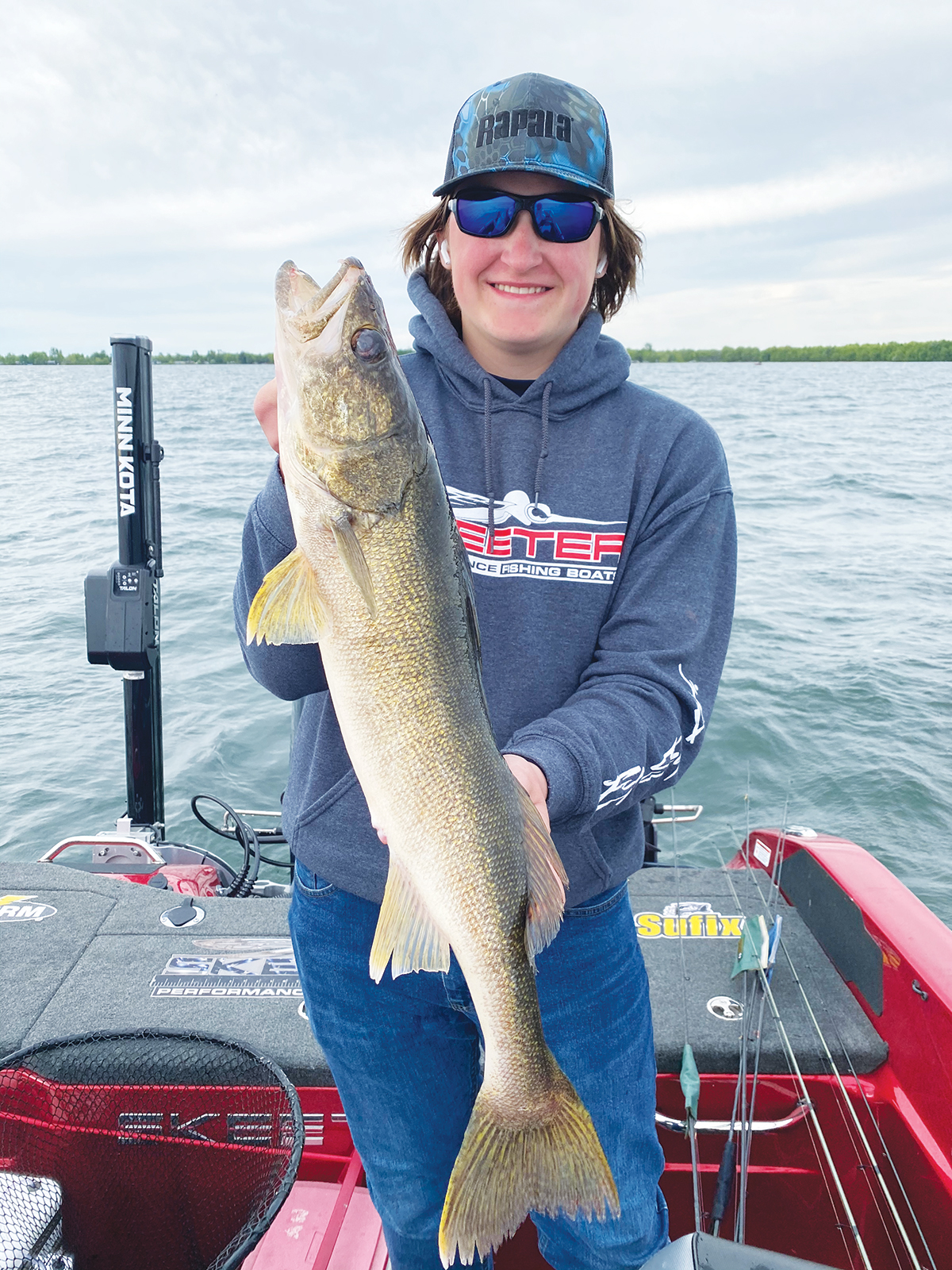
Tony Roach: As we get into July and August fishing, the trolling bite really takes hold. It happens when we get the last of the big bug hatches around the first or second week of July. That’s the indicator that the walleyes are going to shift away from the flats and out into the featureless basin. Water temps are rising to the maximum at this time of year, so a lot of pelagic baitfish like spottail shiners and ciscoes start to live in the deepest, coolest water they can find and the walleyes are right on their tails. The hot walleye bite on structure begins to dissipate. You won’t see the big clustered schools of fish on the tip of a mudflat or along a key sharp edge on one of the flats. The walleyes scatter and roam. Sure, you’ll see fish close to bottom in some areas, but a lot of walleyes start to suspend a bit more on these big fisheries. The best way to cover water obviously is trolling crankbaits, and the most effective for me on a lake such as Mille Lacs is using leadcore line.
MWO: Let’s break that down and talk specifically about how you’re set up to troll.
TR: I use 18-pound Sufix leadcore line, paired with a long monofilament leader. Clear-water fisheries like Lake Mille Lacs are quite a bit different than trolling, say, on the Mississippi River down in Red Wing. It’s important to get that lure away from the leadcore line, and I’ve experimented with shorter leads but you just don’t get as many bites. You need a long leader on Mille Lacs; I’ll run about 30 feet of 10# Sufix Advance mono. As a bonus, because we’re trolling at 1.8 to 2.2 mph, the mono acts as a nice shock absorber when the fish strikes because it has a lot of stretch versus braid or fluoro.
MWO: What are some of your favorite lures for trolling Lake Mille Lacs?
Are you enjoying this post?
You can be among the first to get the latest info on where to go, what to use and how to use it!
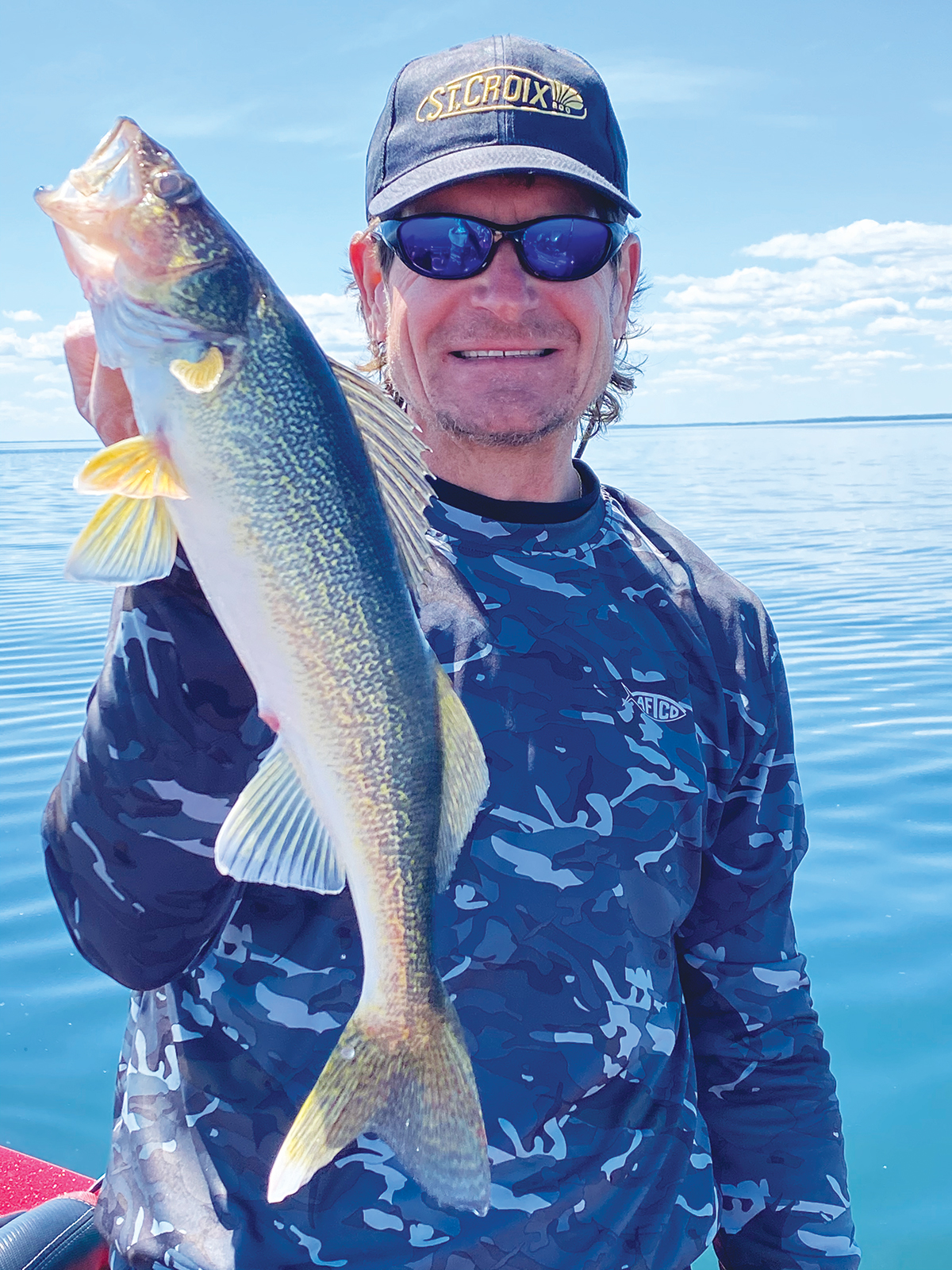
TR: My color assortment varies depending on where I’m trolling on the lake. If I’m on the south end around more of the deep rock and gravel structure there, I tend to use more crayfish colors, whereas if I’m out in the mud basin or on the north end, the colors range more across the silver or white baitfish patterns and sometimes brighter colors like UV pink or green. In the rocks, I might be getting occasional “deflection bites” where the lure is bouncing erratically off the bottom and looks more like a scooting crayfish. You can’t troll the mud and dig the lure into the bottom or it will get mucked up with debris, so all the bites are suspended off bottom. Also, I tend to use lures with a super-tight wobble and more erratic when I’m fishing in the rocks and gravel compared to the mud basin.
MWO: What about sizes and styles of crankbaits?
TR: My choices for crankbaits can change from year to year or even from early to late season. It depends on what the baitfish population is looking like. You might have an incredible perch hatch, and smaller baits like #4 or #5 Rapala Shad Dancers are the ticket. I use Shad Dancers and Jointed Shad Raps in the rocks because of their action. You might have a lot of larger lake shiners or small ciscoes in the system, and I’ll choose a lot of #7, #8, or even #9 Shad Raps and Rapala Tail Dancers, especially when I’m trolling the mud basin. Glass Shad Raps work very well in the basin, too. This year, we had a huge perch hatch and spottail shiner hatch as well, so I’m sure the smaller lure profiles will be hot in July and August because they imitate those small baitfish so well. Sizes #4, #5, and maybe #7 on the large end will work the best.
MWO: Talk about your choice of rods for trolling leadcore.
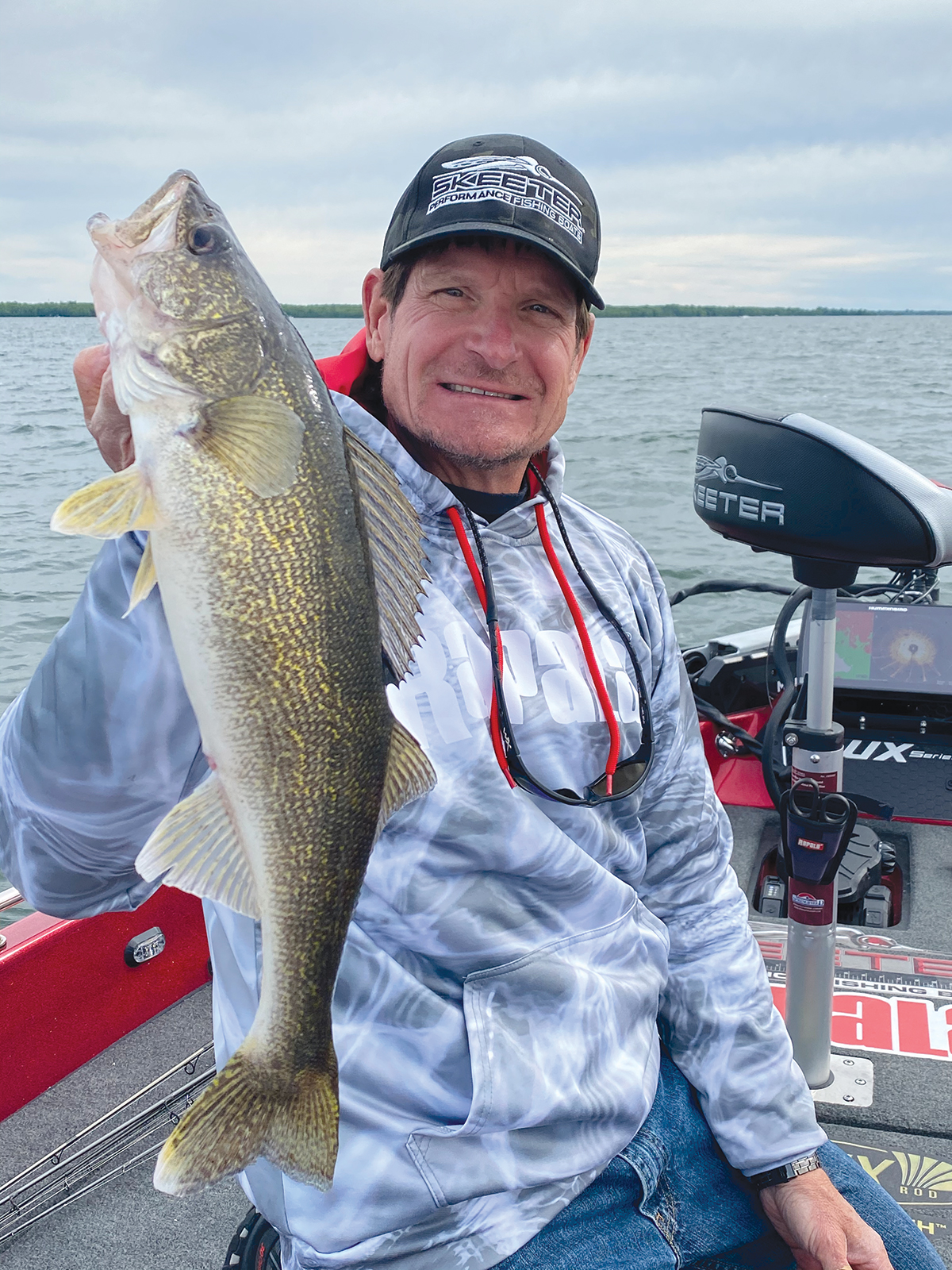
TR: I use both 7’ 6” and 8’ 6” St. Croix Eyecon trolling rods (editor’s note: models ET76MMT and ET86MMT) for my leadcore setup. If I have a full boat of customers, the 8’ 6” rods are on the bow with planer boards out, and the back rods are the 7’ 6” models. When you have a lot of line out trolling leadcore, this stacking arrangement keeps lines from crossing over each other. Leadcore really dampens the action you can see or feel from a trolled crankbait. Although you don’t have to worry about vegetation on the lake bottom when you’re trolling the mud basin, there usually are pieces of floating debris on the surface or suspended in the water column during late summer. For a heavy-duty trolling rod, the Eyecon has a supremely sensitive rod tip and you can see the action of the lure really well. When the lure isn’t wobbling because it’s picked up debris or you’ve hooked a tiny fish, you’ll know it. As everyone knows, it’s important to know that your baits are running true when you’re trolling.
MWO: It’s trolling season throughout the upper Midwest! If you enjoy fishing the larger walleye lakes we’re blessed with in this region of the country, employing leadcore trolling tactics will definitely put more fish in the net for you.
MWO
SHARE THIS POST
Did you enjoy this post?
You can be among the first to get the latest info on where to go, what to use and how to use it!
